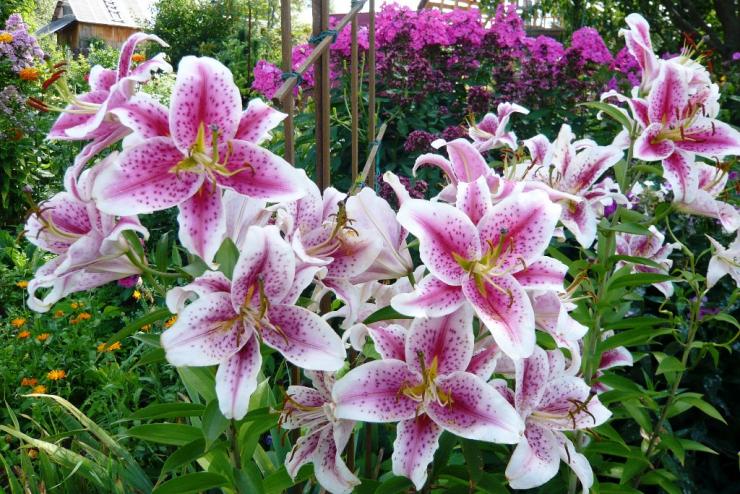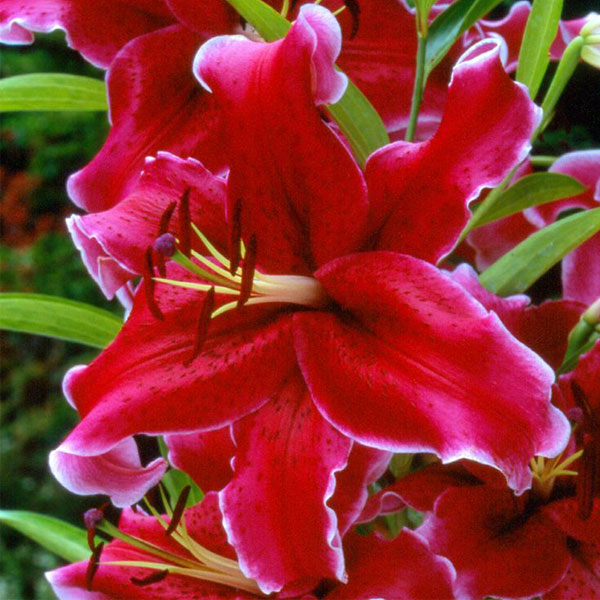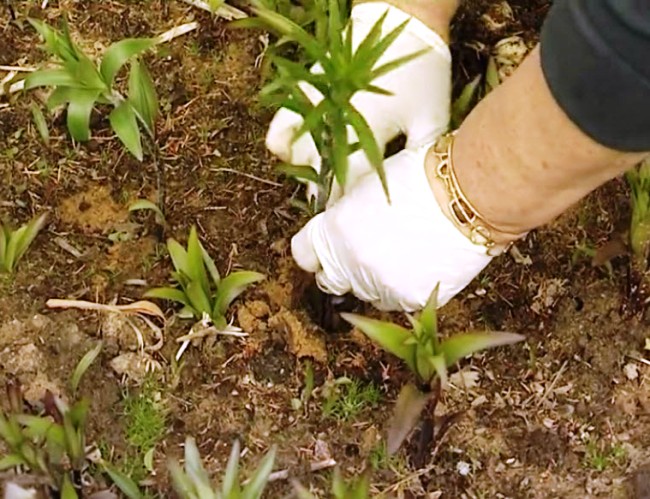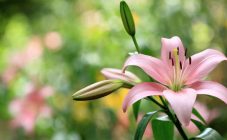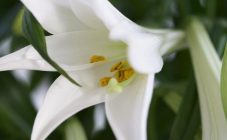Content:
Oriental lilies (oriental hybrids, oriental hybrids) are varieties that were obtained as a result of crossing Asian species. They are also called the beauties of the East and the most aristocratic flowers. They are distinguished by a variety of color combinations and flower shapes. Most oriental hybrids are plants with large (up to 31 centimeters in diameter), very fragrant flowers, which is why they are so loved by gardeners from all over the world and make up 10% of all types of lilies grown by humans.
Hybrids bloom at the end of summer, after the heat begins to subside and cooler weather sets in. These flowers are grown both for decorating their own plots and for cutting, for creating bouquets and various floristic compositions.
Plant characteristic
Different varieties of oriental hybrids look so different that sometimes it is hard to believe that they can have anything in common at all. A long, simple stem (about 70-90 centimeters long) continues the bottom of the bulb. The leaves are flat, planted in a spiral. In the corner of the lowermost leaf, a bud develops, which grows and turns into a small bulb that grows the next year.
Flower shades range from boiling white to bright red, pink and brownish yellow. Many varieties have contrasting rays as well as small specks on the petals. Some species may have supra-luminal roots.
After planting, a bulb appears from the seeds of oriental hybrids within a year, which grows for a long time, and only when it reaches the desired size (this usually takes several years) it lets out an airy stem. After that, the bulb produces larger stems every year. This feature is of great importance for the life of lilies.
Types and varieties of culture
The group of oriental hybrids includes several varieties of lilies that differ in certain characteristics. Most often these are decorative species that are grown in pots.
- White oriental lily (Snow Lily) is the only variety with a Mediterranean type of development. It is widespread in the Balkan Islands and Asia. As the name implies, the difference between white in a lily is that it has only one color variant of the flower, slightly yellowing near the base. It blooms a little earlier than others: in the middle of summer. The white lily also has certain disadvantages, for example, it is not at all resistant to diseases.
- Oriental lily (Oriental Lily) is a large plant, sometimes reaching a meter in height. The inner side of the petals is white-yellow; on the outer, spots and papillomas can be observed. The growing season is late July - August, flowers have a strong, pronounced aroma.
- Lily Time Out (Time Out) - the most unpretentious variety of oriental hybrids, it can easily be grown and propagated even by a beginner. The flowers are relatively small, 18-20 centimeters in diameter. The petals are widened, with bright yellow longitudinal stripes and brownish-red stamens. Height 100-120 centimeters, flowering occurs in late summer - early autumn.
- Lily Asterion is another type of oriental hybrids. Plants can grow from 40 to 120 centimeters in height. They bloom in large buds, when opened, the diameter of the Asterion lily is about 23 cm. On one stem, there can be up to three flowers with slightly wavy, creamy white petals.
Oriental lilies: care and cultivation
In natural conditions, oriental lily prefers hills with low vegetation, warmed by the sun, so you need to find a similar place at home. They will also tolerate a light shade, but not near the trees. The soil for such plants should be constantly loose, saturated with nutrients. It is advisable to fertilize it at least once a season.
Bulbs are planted in open ground in autumn or spring. As a rule, lilies are planted in the first autumn month, at this time it is quite problematic to buy high-quality bulbs, so you can start replanting old ones already available on your home site.
It is very important to choose the right place not only for planting lilies, but also know how to arrange them correctly. To do this, you need to take into account the height of the plants, the size and color of its buds. For example, varieties of lilies with a large height are best placed in groups of several pieces at the back of the flower bed. A good solution would be to plant low types of oriental lilies in the middle of the flower bed in combination with other flowers: asters, irises, peonies, and so on.
Lilies are generally planted to a depth of three times the size of their bulbs. However, you always need to pay attention to the expected growth of the plant and adjust this rule, that is, plant the bulbs of larger plants deeper, and lower ones slightly higher than required.
To plant an oriental hybrid bulb, you must first dig a hole of the required depth. Prepare protection in the pits from river sand with coal. Carefully plant the bulbs for protection, slightly pressing them into the sand. Pour a layer of soil on top of the plant and water. As it grows, do not forget to take care of the plant: maintain soil moisture, loosen it in time, remove dead leaves.
Major diseases and pests of crops and control measures
The wrong soil (too dry or, conversely, wet), poor conditions and lack of prevention often lead to various diseases of oriental lilies. Usually these are various fungal infections and rot, affecting both leaves and bulbs and flowers. Such diseases are treated by removing the diseased areas and spraying the entire plant with Fundazol or another substance.
Oriental hybrids must be treated with insecticides, then you will not have to get acquainted with such pests as lily fly, aphid, click hook, bear and so on.
Observing agricultural techniques, you can admire the luxurious flowering of lilies for more than one year.
